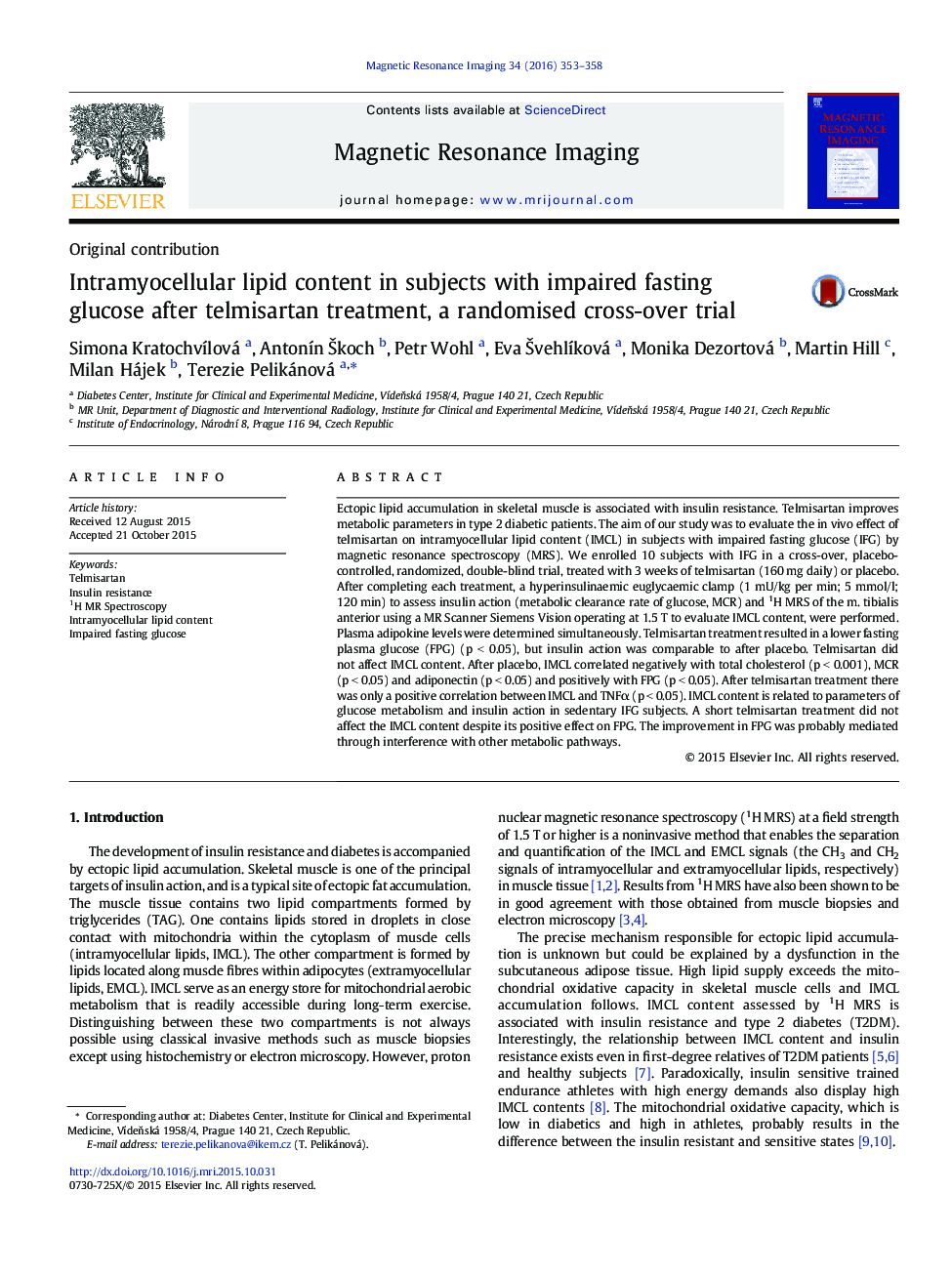| Article ID | Journal | Published Year | Pages | File Type |
|---|---|---|---|---|
| 1806165 | Magnetic Resonance Imaging | 2016 | 6 Pages |
Ectopic lipid accumulation in skeletal muscle is associated with insulin resistance. Telmisartan improves metabolic parameters in type 2 diabetic patients. The aim of our study was to evaluate the in vivo effect of telmisartan on intramyocellular lipid content (IMCL) in subjects with impaired fasting glucose (IFG) by magnetic resonance spectroscopy (MRS). We enrolled 10 subjects with IFG in a cross-over, placebo-controlled, randomized, double-blind trial, treated with 3 weeks of telmisartan (160 mg daily) or placebo. After completing each treatment, a hyperinsulinaemic euglycaemic clamp (1 mU/kg per min; 5 mmol/l; 120 min) to assess insulin action (metabolic clearance rate of glucose, MCR) and 1H MRS of the m. tibialis anterior using a MR Scanner Siemens Vision operating at 1.5 T to evaluate IMCL content, were performed. Plasma adipokine levels were determined simultaneously. Telmisartan treatment resulted in a lower fasting plasma glucose (FPG) (p < 0.05), but insulin action was comparable to after placebo. Telmisartan did not affect IMCL content. After placebo, IMCL correlated negatively with total cholesterol (p < 0.001), MCR (p < 0.05) and adiponectin (p < 0.05) and positively with FPG (p < 0.05). After telmisartan treatment there was only a positive correlation between IMCL and TNFα (p < 0.05). IMCL content is related to parameters of glucose metabolism and insulin action in sedentary IFG subjects. A short telmisartan treatment did not affect the IMCL content despite its positive effect on FPG. The improvement in FPG was probably mediated through interference with other metabolic pathways.
